(Photo by Rich Graessle/Icon Sportswire)
Personnel packages are the best. You know those old cheesy movies where the nerdy protagonist uses their brains and research skills to bone up on a sport before the big game? Personnel packages are like a real-life version of that Hollywood cheat code. All you need to do is learn the basic personnel packages, and people will look at you like you are Tony Romo in the announcer’s booth.
It’s actually quite simple. Just remember the alphabetical order for non-quarterback skill positions: Backs, Tight Ends, and Wide Receivers. These three slots will always add up to five. Personnel packages are only two numbers because the last slot (WR) is implied. Still with me? If you ever get confused, don’t be afraid to reference our handy graphics below.
10 Personnel (4WR)
The 10 personnel package is sometimes called the “four-wide set” obviously referring to the four wide receivers in this package. Note that there is one running back in this set that can be used in several ways. Teams can line up their running back in the slot to effectively have five receivers running routes, or even drop the back next to the QB for pass-blocking or a run.
Many football fans will talk about this personnel package ad nauseam likely for good reason: it’s exciting. Having at least four people lined up to receive a pass almost always means the team is trying to gain some significant yardage. In reality, teams only used 10 personnel for 3% of all NFL plays in 2019. If your favorite team isn’t the Arizona Cardinals, then your team ran 10 personnel between zero and 8% of the time. Fun fact: the Cards ran the four-wide set nearly once every three plays in 2019! That’s because head coach Kliff Kingsbury loves his air raid offense and clearly adapted his NCAA technique to the NFL. Here’s a shot of the 2019 Cardinals. Note the one running back and the four receivers lined up for the pass.
11 Personnel (3WR)
The 11 package is an easy one to remember. It’s just one RB, one TE, and three wide receivers. 11 personnel is almost every NFL team’s bread and butter. Only five teams employed the 11 personnel package for less than 50% of their snaps in 2019. The main reason 11 packages are so popular in the NFL is because of their versatility. If the quarterback can see the defense in a nickel package, he can choose to go for a pass. Conversely, if the QB sees plenty of extra defenders dropped back and expecting a pass, he can hand the ball off to his running back. In 2019, 67% of 11 packages resulted in passes while 33% were run plays. In this shot of the Giants’ 11 personnel package you can clearly see the tight end set on top and just behind the line, the three receivers on the outsides, and the running back next to the QB.
12 Personnel (2WR)
The 12 personnel package is another popular grouping around the NFL. It was used in 20% of all snaps in 2019, which makes it comfortably the second most popular personnel package in the NFL. Still, the rate at which teams choose to use this package can vary quite a bit. Some teams run 12 personnel as little as 8% of the time, while others use it for more than 50% of their plays. This grouping is pretty balanced and often used by teams with capable tight ends. 21 packages allow the offense to go for a power run or have their tight ends stretch the field and make a play in the passing game.
Here we have the Eagles running a 12 personnel package against the Seahawks. It’s a bit tight, but this is still a pretty good example. The receivers are lined up in the slots while the tight ends are close to the line and set back a bit. The tight end on the top looks like he’s ready to go straight out for a pass while our tight end below looks like he may be prepared to pass block or chip block. Meanwhile, the running back is set next to Carson Wentz.
13 Personnel (1WR)
The 13 package isn’t used often, and if you aren’t counting the bodies on the line it can be easy to miss. That’s because, with three tight ends crammed around the offensive line, it can be tough to notice where everyone is stationed. Also, it’s not uncommon to see the back motion out wide, making the package seem more like a 03 and less like a 13. This package is typically used in short-yardage situations and results in a run play about 64% of the time. One of the advantages to the 13 personnel package is that the defense usually plays their hand when lining up against it. Seeing so many guys on the line, the defense is more likely to show a blitz if one is coming. If the QB sees something he doesn’t like, he can change up the play and tell his skill positions to go out for a pass.
Here we have the Titans running their 13 personnel package against the Raiders. One tight end can be seen on the top of the line while the other two are situated at the bottom. There’s also one receiver lined out wide and one running back behind the QB.
21 Personnel (2WR)
This is the standard I-Formation you hear so much about. We see plenty of the 21 personnel packages in NCAA football, but it’s become less popular in the NFL over the years. Be that as it may, 21 personnel packages were still used in 8% of all NFL snaps last year, making it the third-most-popular in 2019.
The 49ers love employing the 21 package because they have multiple backs with a wealth of varying skill sets and a tier-one tight end that is capable of blocking, catching, and anything in between. In this image, we can see a receiver on each side and tight end George Kittle set next to the bottom of the line. Jimmy Garoppolo is lined up under center with Kyle Juszczyk immediately behind him at fullback and Tevin Coleman behind everyone at halfback.
22 Personnel (1WR)
Another I-formation, the 22 package is used about half as much as the 21, making up roughly 4% of snaps in 2019. Better suited to the run game, 22 personnel packages became run plays 80% of the time. This one is quite common in short-yardage situations. Below we can see the two backs lined up behind the quarterback, one receiver out wide, and a tight end on either side of the line.
There are plenty more personnel packages in football, but the rest of them combined only accounted for about one percent of all NFL plays in 2019. Some examples include 00, 01, 02, 03, 20, 23, 30, and 31 packages. These personnel packages should be self-explanatory to you by now. Just remember the alphabetical order of positions.

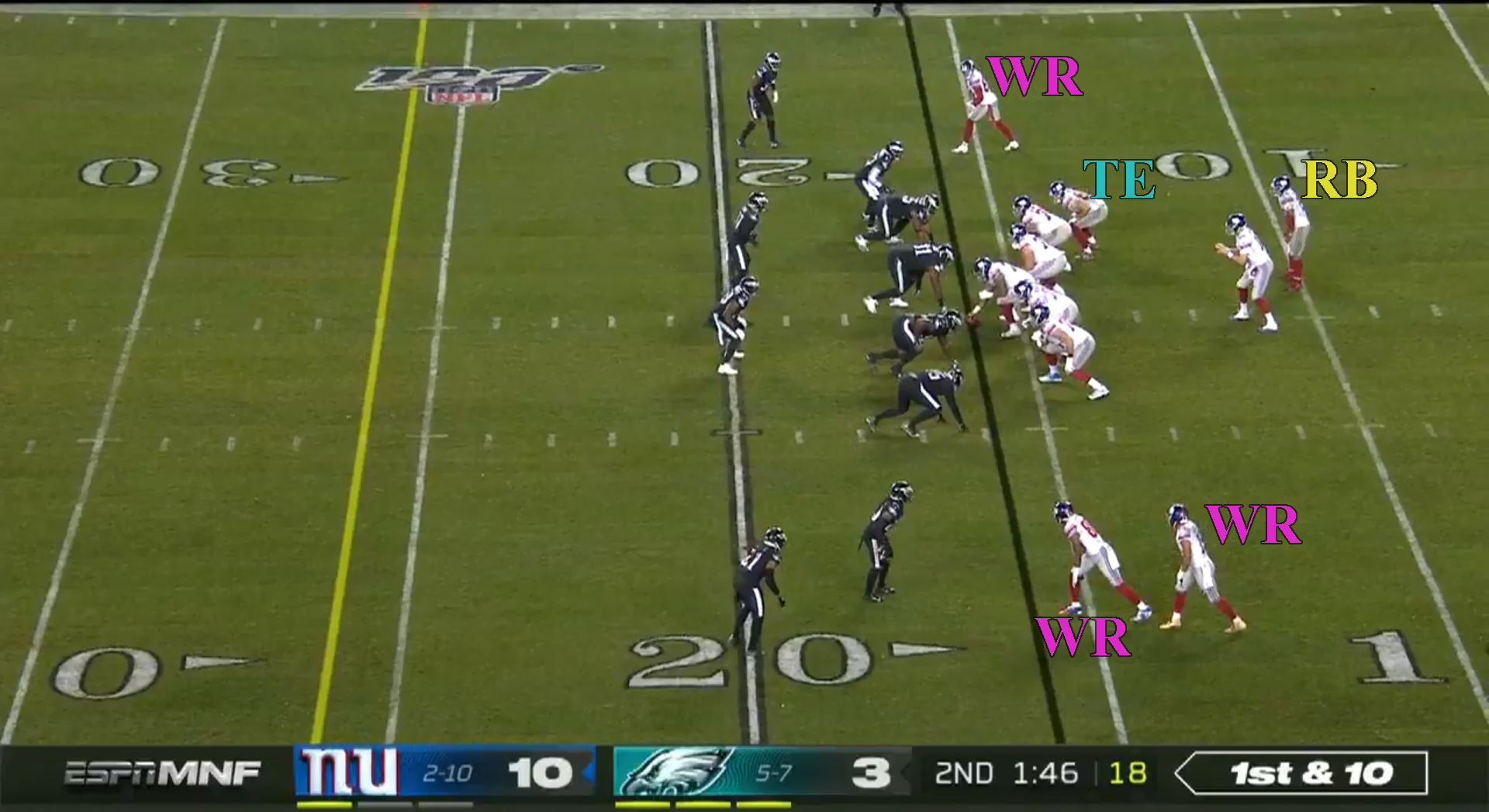
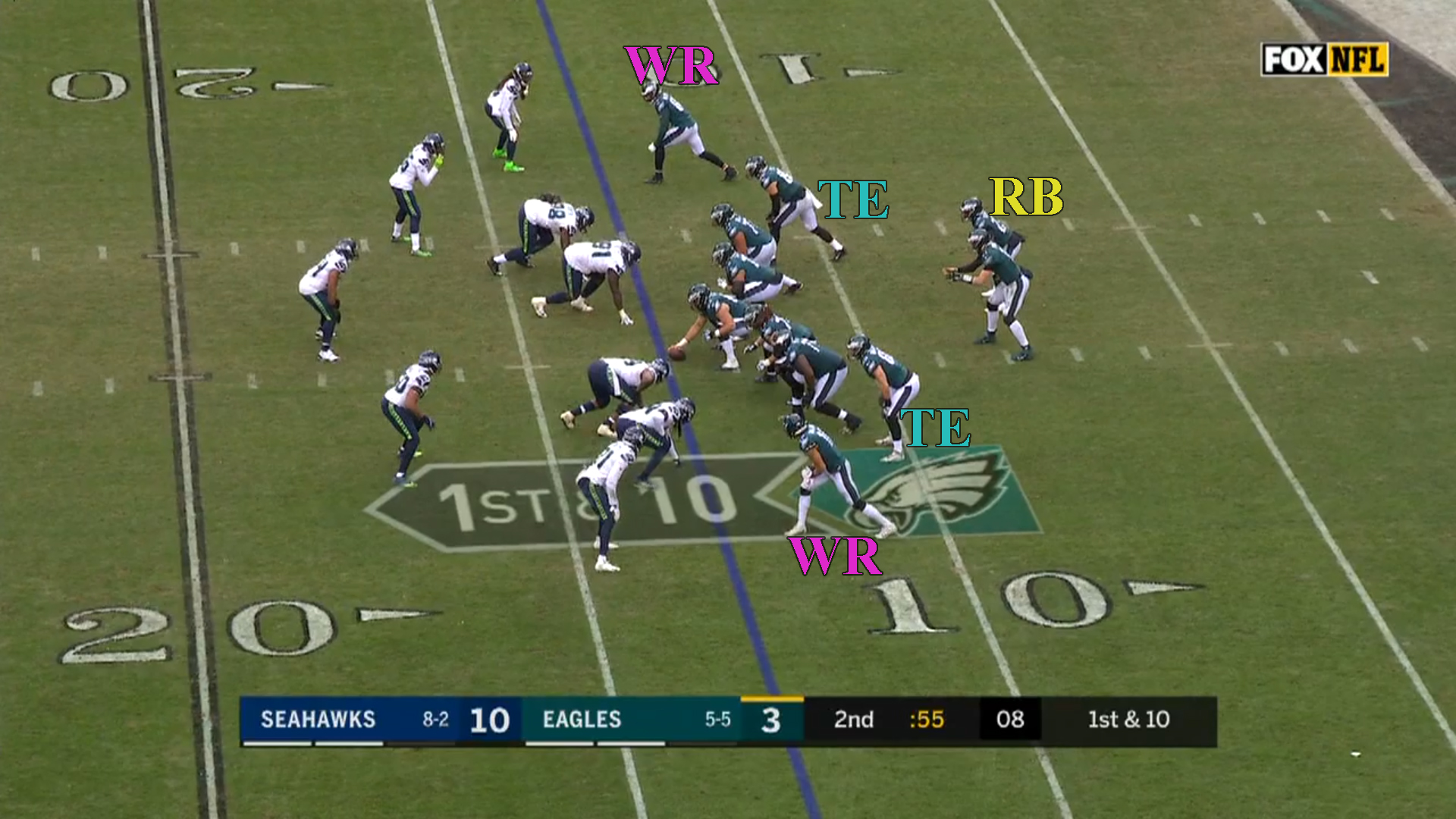
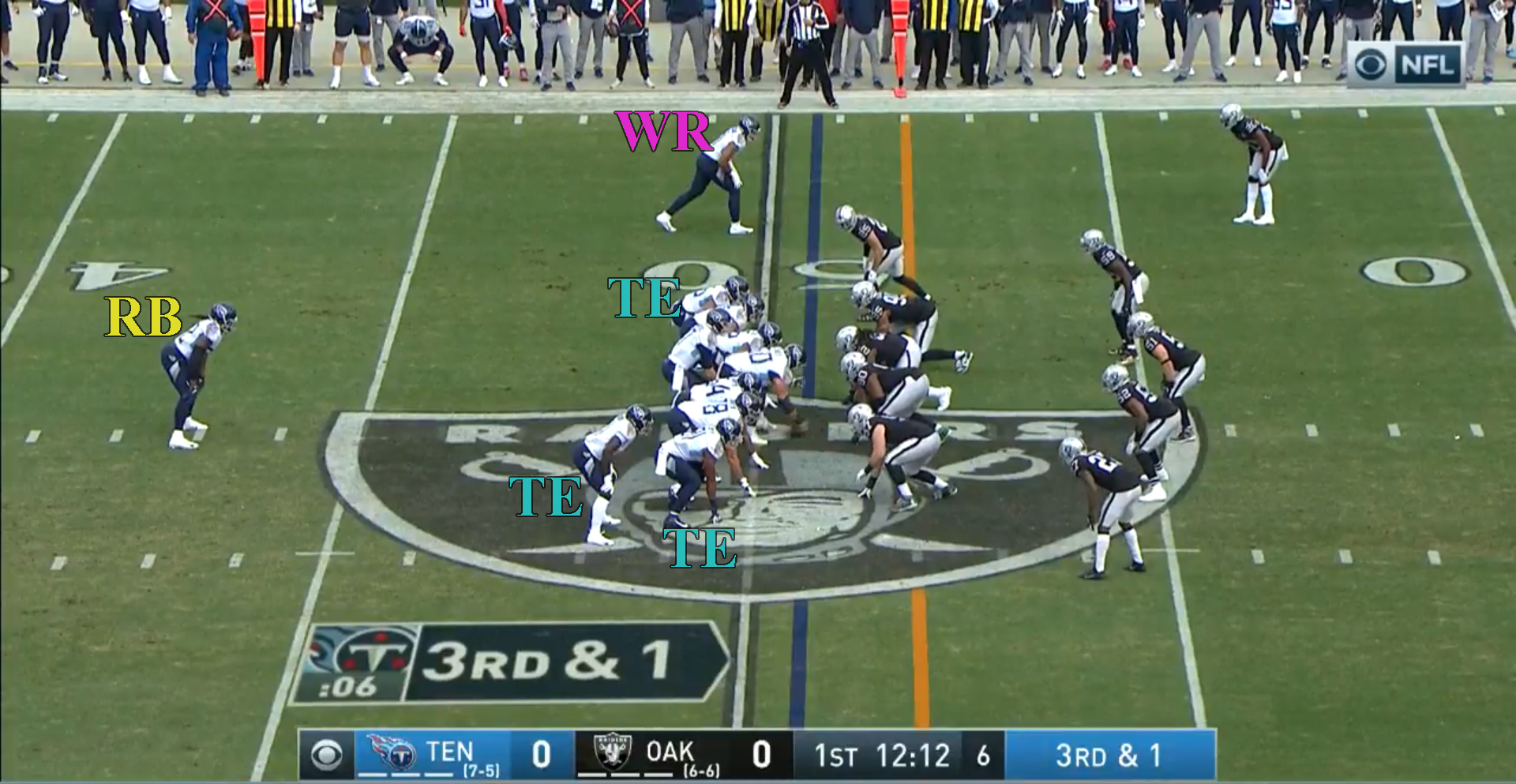
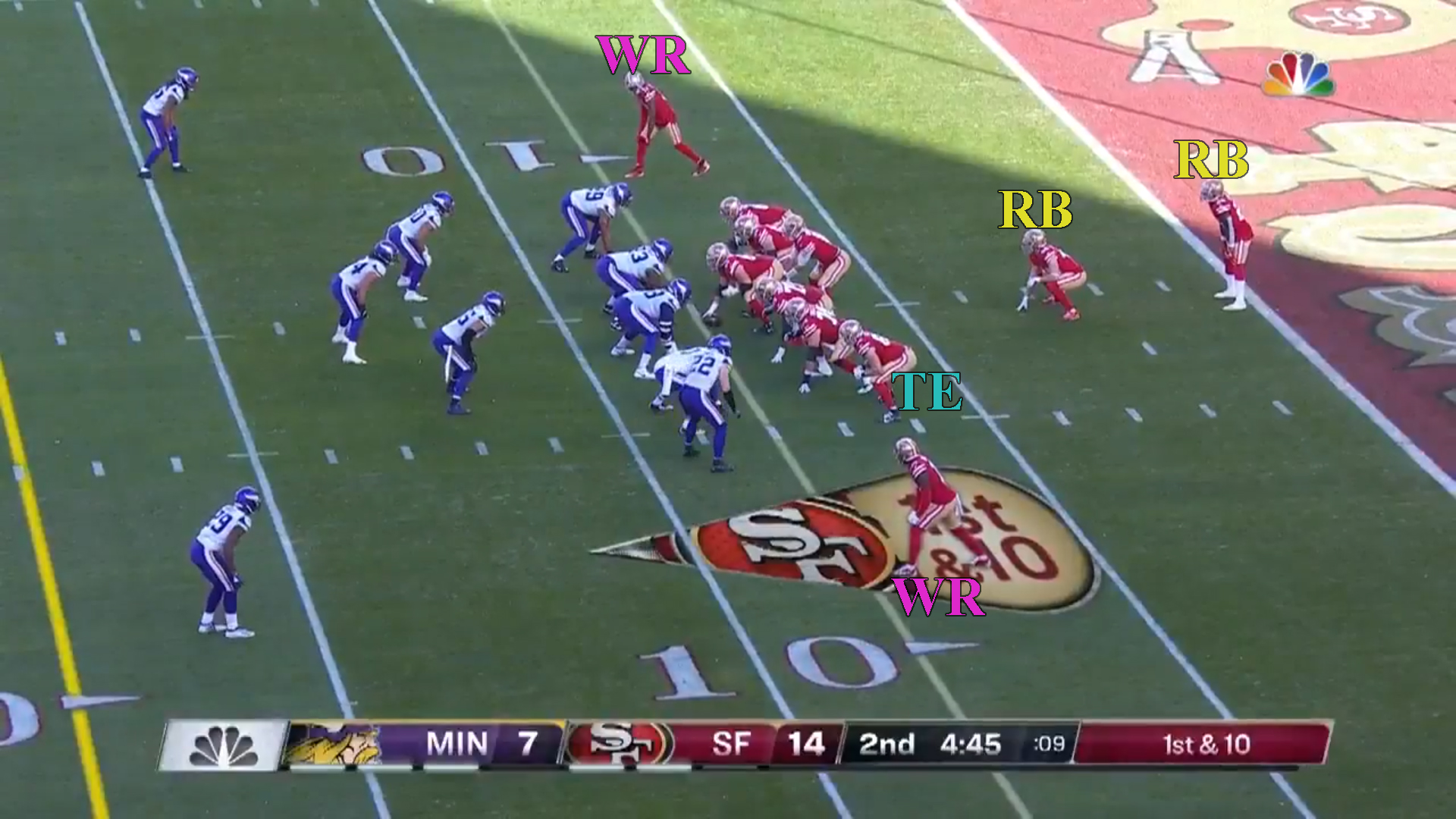
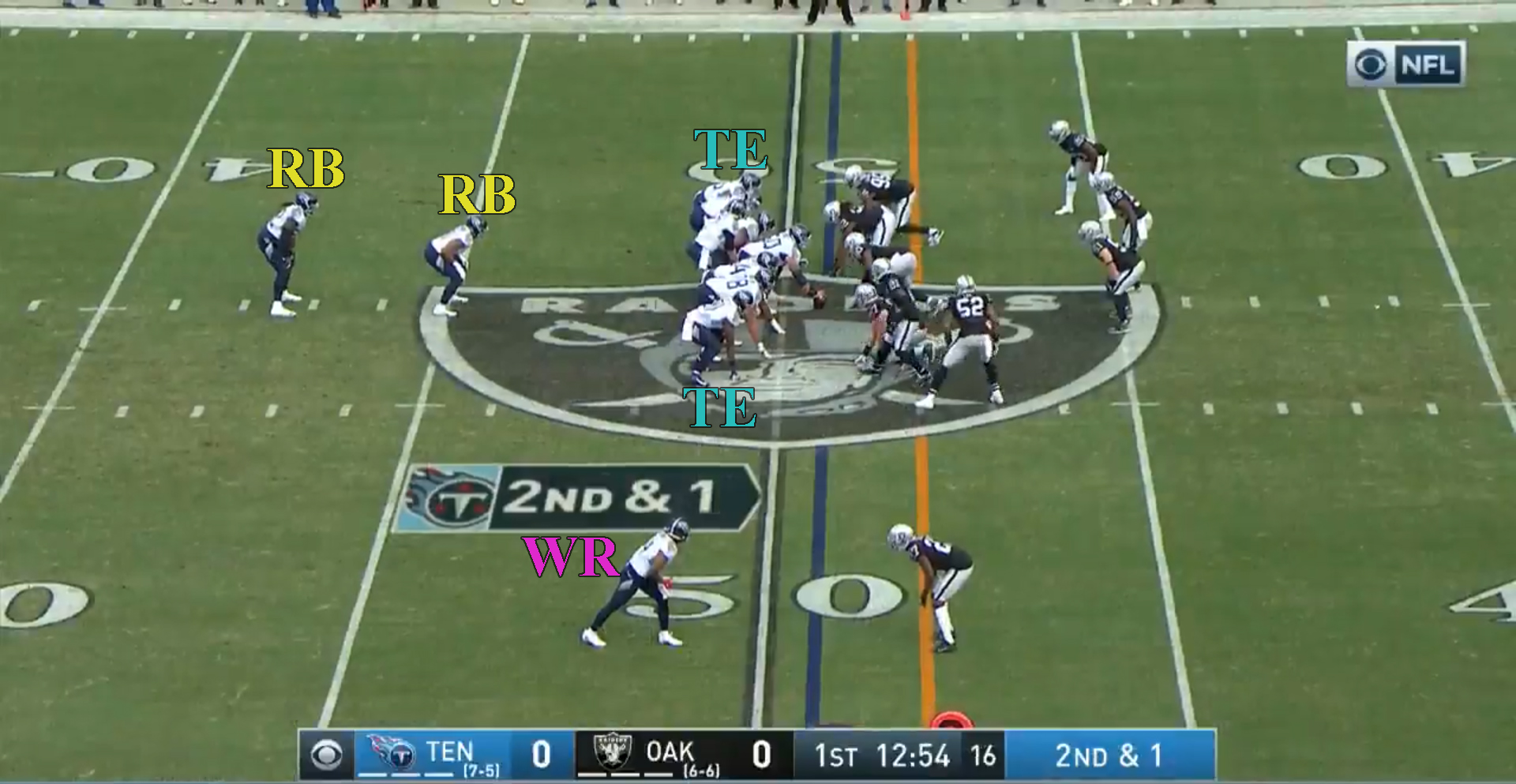
Thanks for not teaching me how play fancy football….